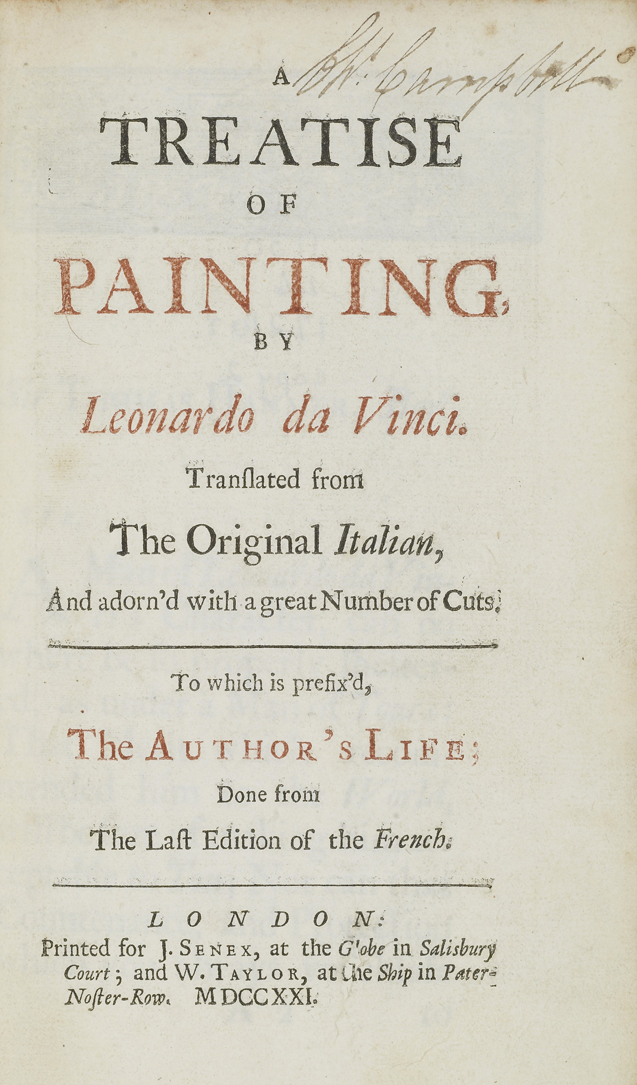
A Treatise on Painting, by Leonardo da Vinci
1721
Senex and Taylor, London
Chapter Display  |
|
The Leg, cannot possibly be moved, either to the one side or the other, without turning the Thigh at the same time: This is owing to the Structure of the Knee; for the Bone of the Thigh, and that of the Leg, being inserted and fitted into each other, the Joncture is at liberty to play backwards and forwards, so far, as is necessary in walking, kneeling, and the like; but is utterly incapable of any lateral Motion, by the very nature of the Articulation. Now if this Joncture were flexible on every side, like the. Os Adjutorium in the Shoulder, or that of the Thigh, where it is joyn'd to the Haunch; the Legs wou'd be in a Condition to be moved sidewise, as well as backwards, and forwards; and wou'd usually be found a-cross and twisted, to the no small hindrance of the Man and his Motions: Further, this Joncture can only be bent forwards, so far as to straighten the Leg, and to set it into a Right Line with the Thigh; nor is its flexure backwards unlimitted; since, if it were, a Man once down on his Knees, wou'd never be able to raise himself upon his Feet again: For, in order to recover himself from this Posture, we find, that in the first place, he discharges the Weight of his Body upon one Knee, and by that means, eases the other; so that the other Leg, not being charged, with any Weight but its own, easily raises the Knee, and steps its Foot on the Ground; This done, he returns back his whole Weight upon this Foot, by resting his Hand upon his Knee, and heaving up his Arm, and with that, his Head and Chest towards the other side; being now at liberty to distend the Thigh, and to straighten it into a Line with the Trunk, he raises himself upright on the Foot placed upon the Ground; till, by that means, he erects the other Leg, and sets it to its fellow.